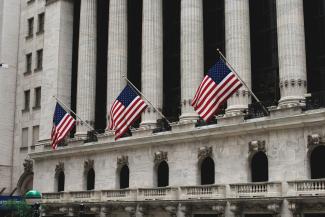
Week of May 9, 2022
The U.S. equity markets experienced more volatility last week, yet the cumulative losses were nothing out of the ordinary. But some of the day-to-day swings were breath-taking with last Wednesday being the best day since 2020, and Thursday erasing all of those gains and then some with the worst day since 2020. In all, the Dow and S&P 500 dropped 0.24% and 0.21%, respectively, while the NASDAQ lost 1.54%.
The short-lived Wednesday rally came after Federal Reserve Chair Jerome Powell said that the central bank was not considering a 75-basis-point rate hike at their upcoming meetings, and that the Fed could be effective in curbing inflation with 50-basis-point increases. But the next day the President of the St. Louis Federal Reserve Bank, James Bullard, commented that the Fed may have to consider 75-basis-point rate increases to curb inflation before it runs out of control. On the comment, the equity markets sold off with the Dow dropping more than 1,000 points.
With some disagreement among the members of the Federal Open Market Committee (FOMC), they have given up describing inflation as “transitory” and now opted for a new term for describing inflation – entrenched.
It is unclear what exactly entrenched inflation looks like or how we will know if we’ve reached it. The Fed has given very little guidance in general on how long they predict it will take for their interest rate hikes to lower inflation. “It’s a very difficult environment to try to give forward guidance 60, 90 days in advance,” said Powell last week. “There are just too many things that can happen in the economy and around the world.”
“Circumstances have locked the Federal Reserve and the U.S. inflation in a race to see who can be the most hawkish, but the Fed always seems to be in catch-up mode, Stephen Innes, managing partner at SPI Asset Management said in a note Sunday night. “Questioning the ability of central banks to lean against inflation effectively remains a significant source of angst as investors weigh greater near-term policy uncertainty versus medium-term inflation uncertainty. The longer this goes on, it will drive even higher investor anxiety levels and pressure stocks lower.”

